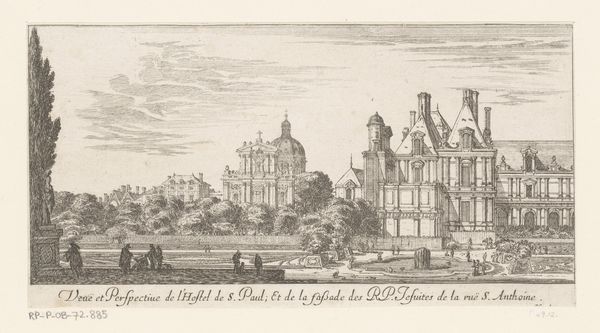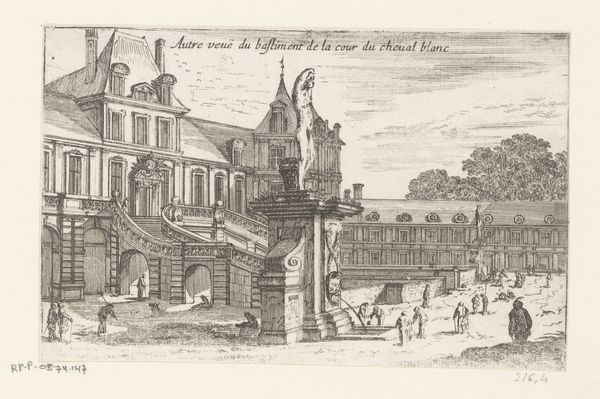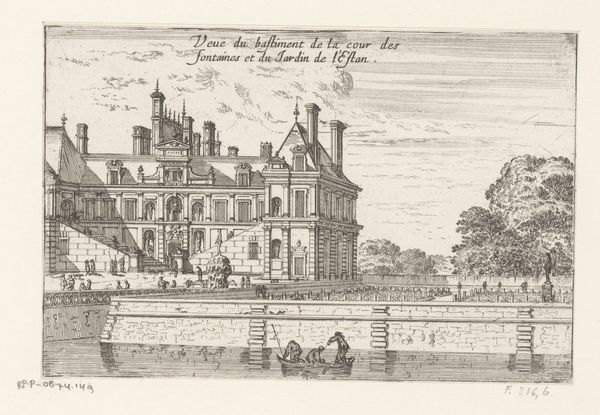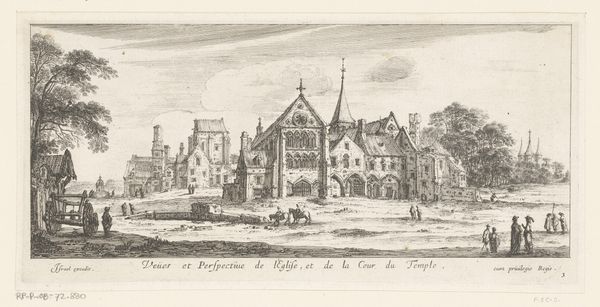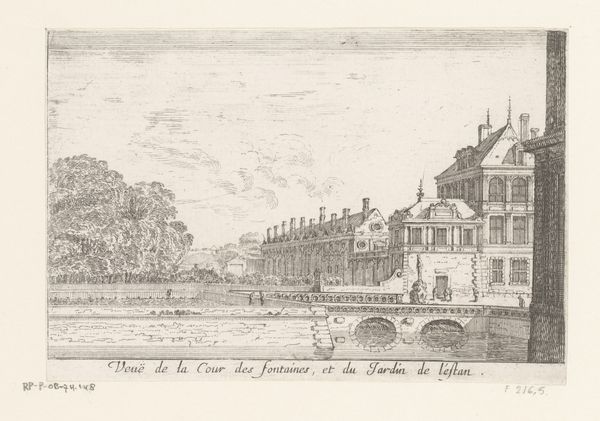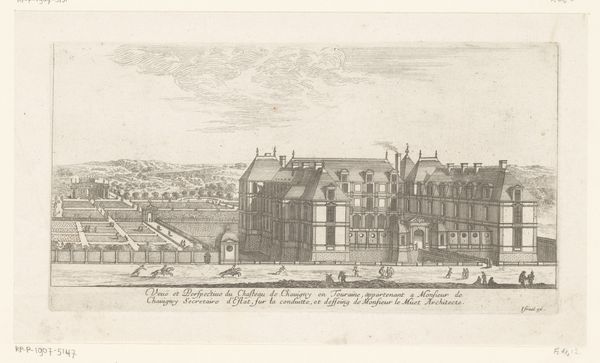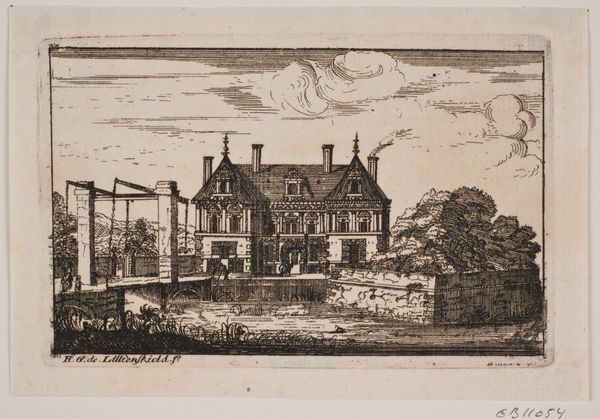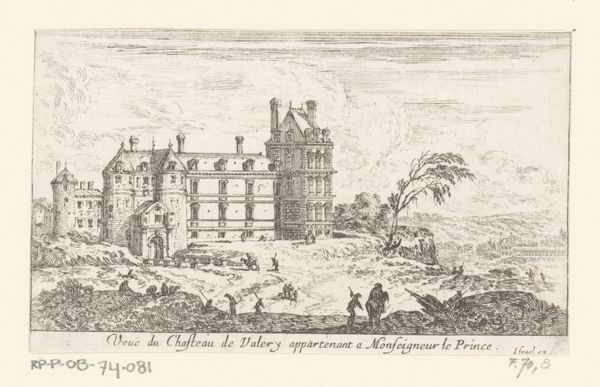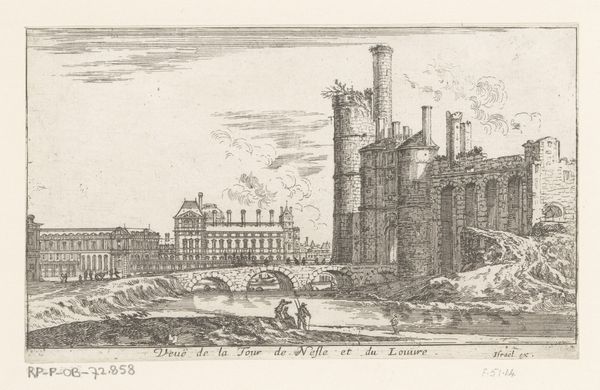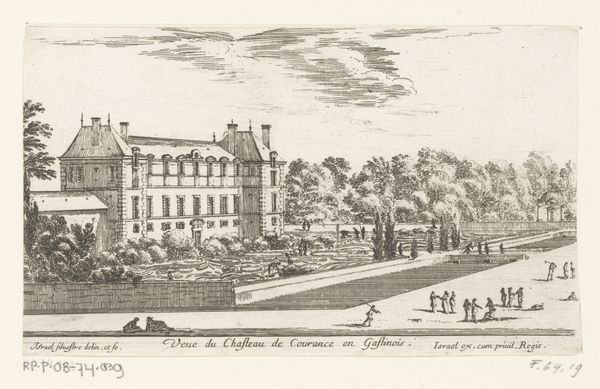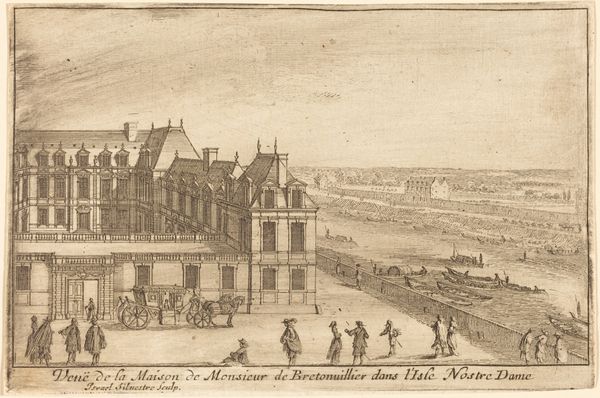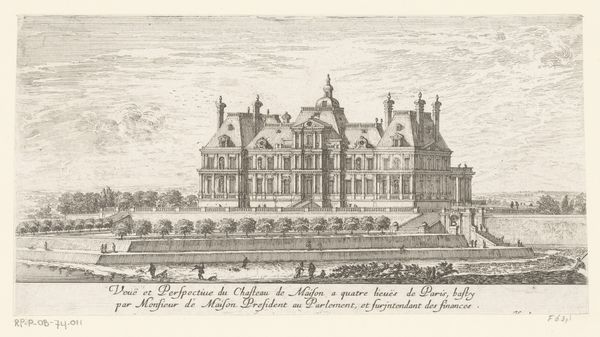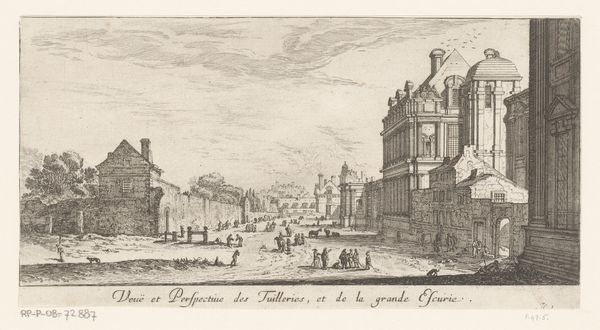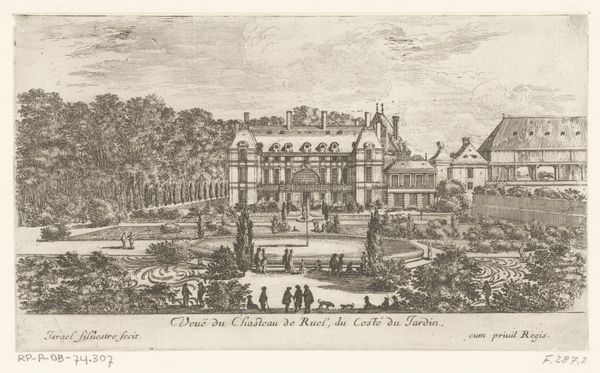
Stadsgezicht van Parijs met het huis van de hertog van Luynes 1652
0:00
0:00
israelsilvestre
Rijksmuseum
print, engraving
#
baroque
# print
#
pen illustration
#
pen sketch
#
old engraving style
#
landscape
#
cityscape
#
history-painting
#
engraving
Dimensions: height 98 mm, width 163 mm
Copyright: Rijks Museum: Open Domain
Curator: This etching, "Stadsgezicht van Parijs met het huis van de hertog van Luynes," or "Cityscape of Paris with the house of the Duke of Luynes," by Israel Silvestre, created in 1652, offers a glimpse into 17th-century Parisian life. Editor: My first thought is of immense privilege. Just look at that mansion dominating the scene! Even rendered in fine lines, the opulence practically jumps off the page. Curator: The image definitely speaks volumes about the distribution of power. Silvestre’s baroque style lends itself to emphasizing the grandeur of aristocratic architecture. One could examine the power dynamics inherent in representing such structures while perhaps sidelining the lives of everyday Parisians. Editor: It’s also fascinating how the architecture almost merges with symbolic implications of power, right? Note how the arches mimic classical Roman triumphal entrances. I can imagine the Duke of Luynes subtly aligning himself with powerful leaders. Curator: Precisely. Silvestre was, in effect, creating visual propaganda. This particular view invites us to dissect the underlying socio-political motives driving such commissions. We must ask, whom did such imagery serve and who was deliberately excluded? Editor: The river Seine also catches my eye. It looks almost like a liquid artery, both a practical resource and a symbol of constant change and commerce. Even here the larger vessels may be those connected to nobility, transporting commodities. Curator: And perhaps ideologies as well. Notice the almost insignificant scale of the people; they seem deliberately minimized in relation to the monumental structures, further cementing a distinct social hierarchy. That’s an important visual comment regarding the place of everyday citizens. Editor: Studying images such as these gives insight into the enduring presence of visual markers signifying authority and social stratification. They resonate even today in very visible or, at times, subliminal messaging. Curator: Yes, critically analyzing images like Silvestre’s work from 1652 invites reflection on both historical hegemonies and contemporary socio-political representation. Editor: Absolutely. Thanks to pieces like this, we’re continuously made aware of symbols, old and new.
Comments
No comments
Be the first to comment and join the conversation on the ultimate creative platform.
